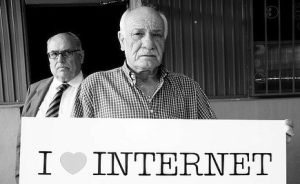I’m spending today at the Macroeconomics of Mobile Money conference at the Columbia Institute for Tele-Information (CITI). I’ve been eagerly awaiting the final session on mobile money for developing countries, which Raul Katz is moderating.
Liveblogging. Please excuse misrepresentation, misinterpretation, typos and general stupidity.
Katz kicks things off by admitting that “we’ve been dancing around the issue of developing countries” for much of the day. He hopes this panel will give us a chance to dig in to the implications of mobile technologies for economic growth in the developing world.
Mobile Money and Economic Development
Dan Jensen of iWorld Services has been in the business since 1974. iWorld deploys Internet-based, open source platforms, products and services in the developing world, focusing largely on Voice over Internet Protocol (VOIP) and targeting small businesses and low-income/rural areas. Their goal is to foster social entrepreneurship in these countries. iWorld works largely with migrant workers and their families — people who don’t have credit cards, computers or wireless devices.
Jensen notes that much of international voice traffic is transitioning from cell phones to VoIP. They hope to begin developing “virtual callshops” and “small business incubators in a box” to support both small businesses and microfinance organizations.
The Use of Mobile Phones for the Unbanked in Saharan Africa
Judith O’Neill has experience in mobile banking on both the business and legal sides. Mobile banking in sub-Saharan Africa started around 2002, but the hype is happening now. The Kenyan government has pledged to increase the percentage of its population with access to formal finance from 27% to 65% within the decade, and all “MTN countries” are pushing for mobile banking to varying degrees.
The players on this scene include mobile operators, banks, products, human ATMs and consumers. O’Neill is particularly interested in the role of human ATMs, which range from individuals in rural villages to various grocery or department stores in larger cities.
She notes that M-Pesa offers completely anonymous SIM cards, which people like for privacy reasons, but which also open up the system to use by terrorists and other criminals. She mentions that this is something that “will be sorted out eventually.”
(Note: SIM card registration was heavily debated in Kenya after the 2007 elections, when text messages were used to incite violence. In July 2009 President Kibaki ordered the Ministry of Information and Communication to begin registering mobile subscribers within 6 months. Some argue that, in addition to possibly increasing costs, this poses a threat to opposition member and human rights activists within the country.)
MTN or Safaricom are the major mobile operators (there’s some debate over which is the largest). Safaricom rolled out M-Pesa in Kenya, where they have 80% of the mobile market. MTN is attempting to introduce mobile banking to all the countries in which it operates, but development has been slower than expected.
O’Niell believes Mobux has a great plan, but they’re not getting funding because they’re based on a private equity model. Other mobile operators (AfriCel, Zaim, SierraTel) are too fragmented and don’t support their own employees enough to be successful in the mobile banking sector at this point.
Formal banks often have requirements (minimum account balances, etc.) that the very poor can’t meet. South African banks require a minimum account balance of 20-30 rand ($2.70-$4) per month, while mobile banks only require 5 rand ($0.69). Many available channels for remittances are also expensive, taking 3 to 55 percent (55 percent!) of the transaction amount.
Based on historical data about “major change adoption,” O’Neill believes mobile banking should reach a 50% market adoption by 2015.
Development Implications of Mobile Money
Richard Field, who has consulted for the World Bank, the UN and ASEAN, is filling in for a speaker from the World Bank who couldn’t make it.
Field starts by asking what problem, exactly, needs to be solved? Is it extreme poverty? Can we solve this through mobile cash? Is the problem that money is available but too costly to move? Is it the problem of how to expand markets? Is it more government control? Less government control?
Field’s presentation is largely a serious of questions, but he raises some incredibly important issues. A sample:
- New availability of credit poses some potential risks: the overextension of loans might lead to inflation or erode the strength of the national bank. Most mobile banking products don’t have reserve requirements in the way formal financial institutions do.
- Another consideration: who issues these loans? Some people believe only banks should have this power, while others believe these services can be provided by microfinance institutions and even organizations like PayPal as well.
- What kind of safety net is in place?
- Are payment systems controlled locally or internationally?
- What about fraud, identity theft, corruption?
- What’s the effect on society if banking is happening so much more quickly?
- What kind of additional resources do funders need to support?
- What about the need for public education?
Lots of things to think about.
